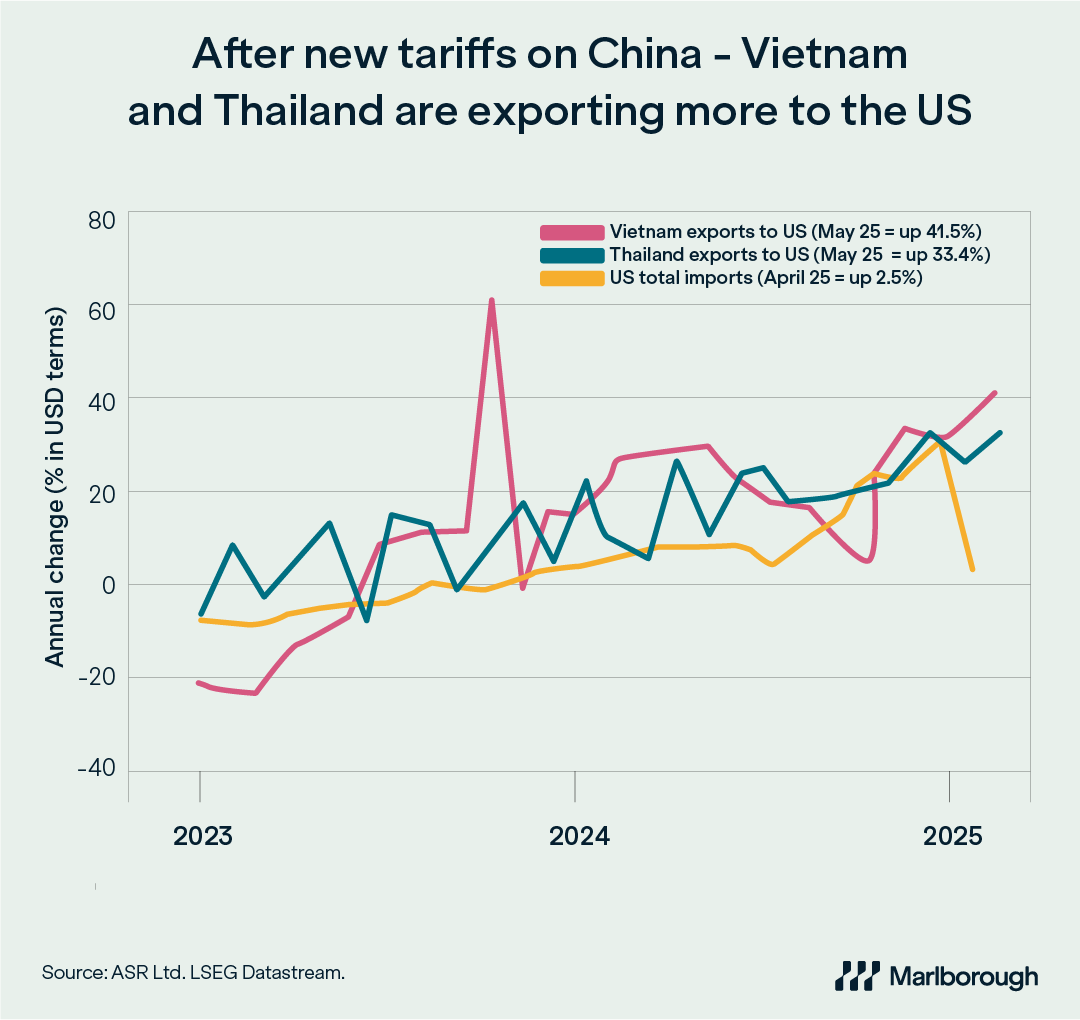Chart of the Week: I Want To Break Free – what the Tour de France can teach us about investing

Welcome to this week's 'Chart of the Week', where we share key insights to help keep you informed on what's happening in the markets.
In the Tour de France, when the road gets blocked, the riders always find another way. And the same is true in international trade - and investing.
The world’s best cyclists are racing across France at the moment, and each team has a strategy. There are the breakaway specialists, the climbers and the sprinters - each bringing something different to help their team navigate the terrain, overcome crashes and ultimately reach Paris in the best possible shape.
Global trade isn’t so different. This week’s chart shows how China - facing the steep climb of US tariffs, as President Donald Trump wages a renewed trade war - has re-routed its exports through South-East Asia. While China’s direct exports to the US fell 43% year-on-year in May, shipments to Vietnam and Thailand rose by 22%. And Vietnam’s exports to the US jumped almost 42%, while Thailand’s were up by a third. The US may have thrown tacks on the road, but the race continues, just using a different route.

The US is now looking to place higher tariffs on goods deliberately re-routed (‘transhipped’) through Vietnam - like adding time penalties for cyclists seen ‘drafting’ behind the motorcade (tucking in behind the cars to reduce air resistance). But here’s the thing: we’ve seen this race before. During Trump’s first trade war in 2018, Chinese exporters quickly found ways to adapt. Goods were mislabelled, under-invoiced or re-routed through other countries. In 2023, $150bn worth of Chinese exports made it to the US via these methods, according to research firm ASR. So, while the rules may change, the riders - or in this case, exporters - often find new routes to the same destination.
Of course, re-routing isn’t just for trade - and the same is true of a team approach. It’s central to multi-asset investing. Just as Tour de France teams rely on a mix of talents to adapt to the different stages of the race - from mountain climbs to sprints - our portfolios draw on different regions and asset classes to help navigate changing economic conditions. Betting everything on one rider, or one region, can work for a while - only to suddenly look like a serious mistake. Just ask anyone who picked Jasper Philipsen to win this year’s green jersey, which is awarded to the rider who secures the most points overall. A nailed-on sprinter, he wore yellow on day one. But by day three, a crash had forced him to abandon the race.
Key takeaway
Great companies - like great cyclists - can have bad days. A diversified, multi-asset approach is like riding in a team: it gives you the depth, flexibility and resilience to handle the road ahead, however unpredictable it gets. And when it comes to constructing portfolios, we’re not just tracking the race - we’re hand-selecting the best riders for each team. Whether it’s a climber from Europe, a sprinter from the US or a breakaway specialist from Asia - we’re curating a group of top-tier specialists, working together to deliver the best possible risk-adjusted outcomes. Because success isn’t about betting on one big-name star - it’s about building the strongest team.
Find out more about our multi-asset solution
This article is provided for general information purposes only and should not be construed as personal financial advice to invest in any fund or product. These are the investment manager’s views at the time of writing and should not be construed as investment advice. The opinions expressed are correct at time of writing and may be subject to change. Capital is at risk. The value and income from investments can go down as well as up and are not guaranteed. An investor may get back significantly less than they invest. Past performance is not a reliable indicator of current or future performance and should not be the sole factor considered when selecting funds.




